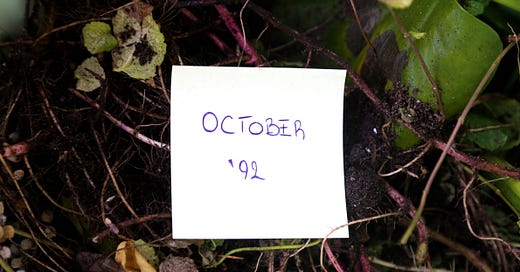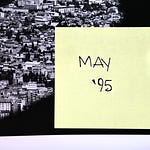October 1992.
Tensions are increasing between Sarajevo and Western countries, due to the passive attitude of the UN Blue Helmets towards human rights violations by Bosnian-Serb forces and the appeasement policy that plays into the hands of the Serbs [you can listen to the latest episode of BarBalkans - Podcast here].
As the arms smuggling routes grow bigger, Yugoslavia is expelled from the UN General Assembly. Tito’s Federation no longer exists and the new Serbian-Montenegrin Federation has to reapply for UN membership.
Meanwhile, the effects of Franjo Tuđman’s extremism manifest themselves in Bosnia and Herzegovina, where the Croatian President has hegemonic aims.
The agreement between Serbs and Croats
Between the end of September and the beginning of October, the governments in Belgrade and Zagreb begin to talk about peace, despite the simultaneous Serbian attacks on Bosanski Brod.
President Tuđman and the President of the Federal Republic of Yugoslavia, Dobrica Ćosić, sign a joint declaration for the normalization of relations between the two countries.
While the Serbs recognize the common borders, the Croats have to grant the region of Krajina a special status. Moreover, the Yugoslav Army should withdraw from the Prevlaka peninsula (at the entrance to the Boka Kotorska Bay), the last piece of Croatian land still occupied.
The UN Security Council validates the Tuđman-Ćosić Agreement with Resolution 779: the Prevlaka peninsula has to be demilitarized and placed under control of the Blue Helmets by October 20.
Not only Bosniaks, but also the Croats of Posavina (the northern Bosnian region, bordered by the Sava River) pay the consequences of the agreement between Serbs and Croats.
In exchange for the control of Prevlaka and Western Herzegovina, Tuđman gives his army the sudden order to retreat from Bosanski Brod, which is conquered by Serbian soldiers in only two days (between October 6 and 8).
This is a risky choice, because it allows the Serbian army to control the entire right bank of the Sava River (the Bosnian side). This means the survival and the connection with both Republika Sprska and the Serbian Republic of Krajina.
The UN Security Council tries to keep the situation under control with two decisions.
The first decision is to create a group of experts, whose task is to gather evidence of violations of humanitarian law in Yugoslavia. Resolution 780 (on October 6) lays the foundations for an international tribunal on the model of Nuremberg trials.
The second decision is to impose the closure of Bosnian airspace to all military flights. Resolution 781 (on October 9) targets the Serbian aircraft, as it uses the airports in Banja Luka and Belgrade to attack Bosnia and Herzegovina and Sarajevo.
However, the no-fly zone over Bosnia does not prevent Radovan Karadžić and Ratko Mladić (respectively, the President of Republika Srpska and the commander of its Army) from napalm bombing Gradačac and Brčko.
On October 15, this action prompts NATO to use the Airborne Early Warning and Control System (AWACS) to monitor the airspace ban on military flights.

The Croat-Bosnian conflict breaks out
In Bosnia and Herzegovina, the agreement between Zagreb and Belgrade fuels the Bosnian-Croat nationalism, stirred up by the opposition to the Constitutional Court ruling that declared the Croatian Republic of Herzeg-Bosnia illegal.
The growing tensions throughout the whole month culminates in the Croatian attack on the town of Prozor on October 25. It is called “the eye of the needle”, due to its strategic role along the Split-Sarajevo road and for the control of Herzegovina and Central Bosnia.
The town (15 thousand inhabitants, one third of them are Bosniak) is conquered, sacked and renamed Tuđmangrad by the Croatian Defence Council and paramilitaries with ustascia insignia (inspired by the nationalist movement allied with nazis and fascists during World War II).
The fighting spread to Novi Travnik, Vitez and Mostar. The leader of the Bosnian Army, Šefer Halilović, calls for a truce, which is rejected.
This is when Bosnian-Croats and Bosnian-Serbs begin to obstruct the transit of humanitarian convoys from Split to Sarajevo, only 160 kilometers away but with 12 checkpoints in between.
Every week, 9200 tons of food are supposed to arrive in the Bosnian capital city, but by mid-October the quantity is around 1100 tons.
An official of the United Nations High Commissioner for Refugees (UNHCR) in Zagreb, José Maria Mendiluce, warnings that more than 400 thousand people could die of hunger, cold and disease in Bosnia in the winter of 1992.
The Serbian bridge between Bosnia and Croatia
The new war front between the former allies in the Republic of Bosnia and Herzegovina benefits the Serbian forces. Indeed, the Serbs take advantage of the situation to conquer Jajce, the medieval capital of the Kingdom of Bosnia, on October 28.
The conquest of the city causes an exodus of over 30 thousand people, who try to flee to Croatia. However, Zagreb has closed its borders since July and all the refugees are pushed back towards Travnik along the so-called “Vietnam path”, a passage largely exposed to Serbian fire.
On the previous day, a pitiful episode took place in Geneva, albeit with the best of diplomatic intentions.
In line with the London Conference conclusions, the map of Bosnia and Herzegovina was examined to find a solution that would prevent the break-up of the Republic into three parts.
The plan drawn up in the framework of the Geneva talks is a division into 7/10 ethnically mixed provinces with broad administrative autonomy, and a central government responsible for defense, trade and foreign policy.
But the conquest of Bosanski Brod in early October has galvanized the authorities in Belgrade, proving that Western diplomats are creating theoretical solutions that have no correspondence with reality.
The army of the Serbian President, Slobodan Milošević, now controls all bridges between the two banks of the Sava River. There is no passage that does not connect the “Serbian lands” in Croatia and Bosnia.
This is why, the self-proclaimed Parliaments of the Serbs of Croatia and Bosnia meet in a joint session in Prijedor - 60 kilometers from Banja Luka - on the last day of October.
On this occasion, the union of the two Serbian Republics is proclaimed. This should be an intermediate step towards the final goal shared with Belgrade: the creation of the Greater Serbia.
The consequence is that a new phase in the siege of Sarajevo begins, as the Bosnian capital is heavily attacked by Mladić’ Bosnian-Serb forces.
The siege of Sarajevo began on April 5 and the city has become the symbol of the Republic’s resistance and survival. Its capitulation has no particular strategic significance in Belgrade, but it is all psychological.
According to the Serbian nationalist point of view, this scenario should revive its people, heralding the defeat of Muslims. And it should also strengthen confidence in Milošević, ahead of the parliamentary and presidential elections on December 20.
If you know someone who can be interested in this newsletter, why not give them a gift subscription?
Here is the archive of BarBalkans - Podcast:
And here the summary of 1991.


















Share this post